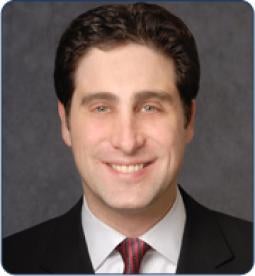Tasteless comments about the growth of social communication often fall back on the hackneyed metaphor of “spreading like a cancer.” The growth is uncontrolled, we are told, metastasizing in unexpected locations with ruthless speed. The body politic, we are told, is being rotted within by mutation. The traditions of the past are under siege, and we require radical surgery for a cure.
The panic is unwarranted, but the metaphor may be more apropos than we realize.
The astonishing (and Pulitzer Prize–winning) The Emperor of All Maladies describes the halting progress made in the fight against cancer since it was first identified by the Egyptian physician Imhotep 4500 years ago. For most of that grim history, cancer has been misunderstood, misidentified, and a hopeless diagnosis for its victims. Research was driven by a small number of obsessed, charismatic individuals, many of whom were unaware of related analyses being performed by doctors elsewhere—people didn’t know things, and when they did it was not disseminated quickly or effectively. Social and intellectual stigmas slowed research. Nearly every advance in the treatment of cancer, from radiation therapy to chemotherapy and beyond, has come about within the lifetime of my grandparents.
And speaking of my grandparents, my grandmother was diagnosed with breast cancer in the late 1960s, but passed away in 1997—30 years later. She was part of the first generation of cancer patients who expected to survive. Yet she and her contemporaries whispered the word “cancer” as though to speak its name would give it a totemic power. Her battles were unmentioned, a private war fought behind closed doors, alone and largely silent.
Contrast that approach to the story of Xeni Jardin, one of the editors of Boing Boing, among the top sites on the Internet. She live-blogged her first mammogram, which returned a diagnosis of breast cancer. She has a Pinterest Page entitled “my life, now, with breast cancer” showing pictures of her medication, the ginger ale she uses to prevent chemo-induced nausea, and various inspirations for her feelings on a given day. And this open approach isn’t limited to patients: Researchers now collaborate across electronic networks and borders, sharing information, ideas, and case studies. There is no isolation anymore in the fight against cancer. Even the best young adult novel of 2012, The Fault in Our Stars, was a dark romantic comedy about teenagers with cancer—the critical moment in the book comes when a group of teens get together to talk about their afflictions.
What do all of these stories have in common? They are all about cancer, but they are also about communication and the way that communication has transformed the way we think about disease, its treatment, and the connection between those who develop treatments and those who are treated. The story of cancer in many ways mirrors the story of the life sciences more generally, and how social interaction—and the legal implications for that social interaction—are shaping a different world.
Once upon a time, there were patients, and there were doctors. Patients were sick, doctors tried to repair them. For many centuries, that involved putting their humors back into balance through a variety of ineffective techniques that ranged from blood-letting to therapies best not mentioned before eating. Some doctors were also intellectuals, and engaged in some variety of research, or writing, or teaching. But there was no class of research institutions, and no infrastructure for solving problems. Information moved slowly, when it moved at all, and only a small number of people were sufficiently aware to do anything with that information even if they received it.
Today, there are patients, there are doctors, there are drug companies, there are university researchers, there are academic medical centers, there are government researchers, there are patient advocacy organizations, there are charitable foundations, there are social media platforms, there are large databases of clinical information, there are computer software modeling companies, there are regulators, there are investors, and so many other types of participants in the world of the life sciences that to name them all would be an exercise in futility. They all want information. They all want to know the latest facts. They all want everything to happen immediately, and they want to know about it as soon as it happens.
Yet the law is not about immediacy. The law is about considered approaches to a variety of competing interests. Despite many of our preconceptions about free speech, the law does not want us to know everything right away, or to have access to all treatments right away. Regulatory approvals, research, and intellectual property protection all come before treatment. This was fine in a world in which no one really knew what was going on—but with the growth of social media platforms and specialized advocacy groups, information is disseminated at the speed of light. Once on the market, drugs and medical devices are no longer quietly promoted to medical professionals, but are advertised to the public at large. More people think that they are the target audience, and are insulted when they are denied what they want.
What this means is that the law is often seen today as an obstacle to progress, rather than a facilitator. This does not mean, however, that the law can or should be ignored—quite to the contrary; the law and its application to the regulation of communication about the life sciences has never been more important, and regulators have never been more active. Rather, it is instead important for lawyers and marketers and researchers and businesses alike to recognize the meaning of this change, and to take that meaning into account in how they engage in their legal clearance, which is no longer taking place in a vacuum. Ironically, we are all under a microscope.
Every step of the process of researching, developing, clearing, marketing, and using any medication or device is now subject to a meta-conversation, a discussion about the wisdom of every path taken, of every decision made, by every participant in the chain. I have often spoken of the internet and social media as “the end of forgetting,” as all things said online rapidly become your permanent record. This means that our words are promiscuous, merging with other communications from other sources, and swirling around platforms that we have never seen or engaged with. The brands we create develop lives beyond the basket of associations we assign to our products, and we must participate in the conversation or allow the discussion to turn against us.
So what does all of this really signify? Most discussions of the law by lawyers talk about specific changes in the law, and how they can be addressed by their clients. But for a lawyer who works in social media, that perspective is far too limited. The technology changes too quickly, and the culture shifts every day (to feel profoundly behind the curve, just ask a 13 year-old about the technology choices she makes, and why). Instead, clients and lawyers must focus on trying to become more aware of the context for these discussions, and the technological advances that give them momentum. A life sciences company that is not profoundly sensitive to the social media environment and to the legal implications of their participation (and the participation of their ultimate customers, whether doctors or patients) is not only potentially getting into trouble (the lawyer voice inside me is screaming “what about the adverse event reporting? What about the privacy considerations?”), but also missing out on incredible opportunities.
My grandmother didn’t want to speak about her illness, even as she fought it successfully for decades. Today, everyone has a megaphone, and they want to talk. So don’t pretend that the world is the same. Figure out how to join in the conversation.




 i
i


